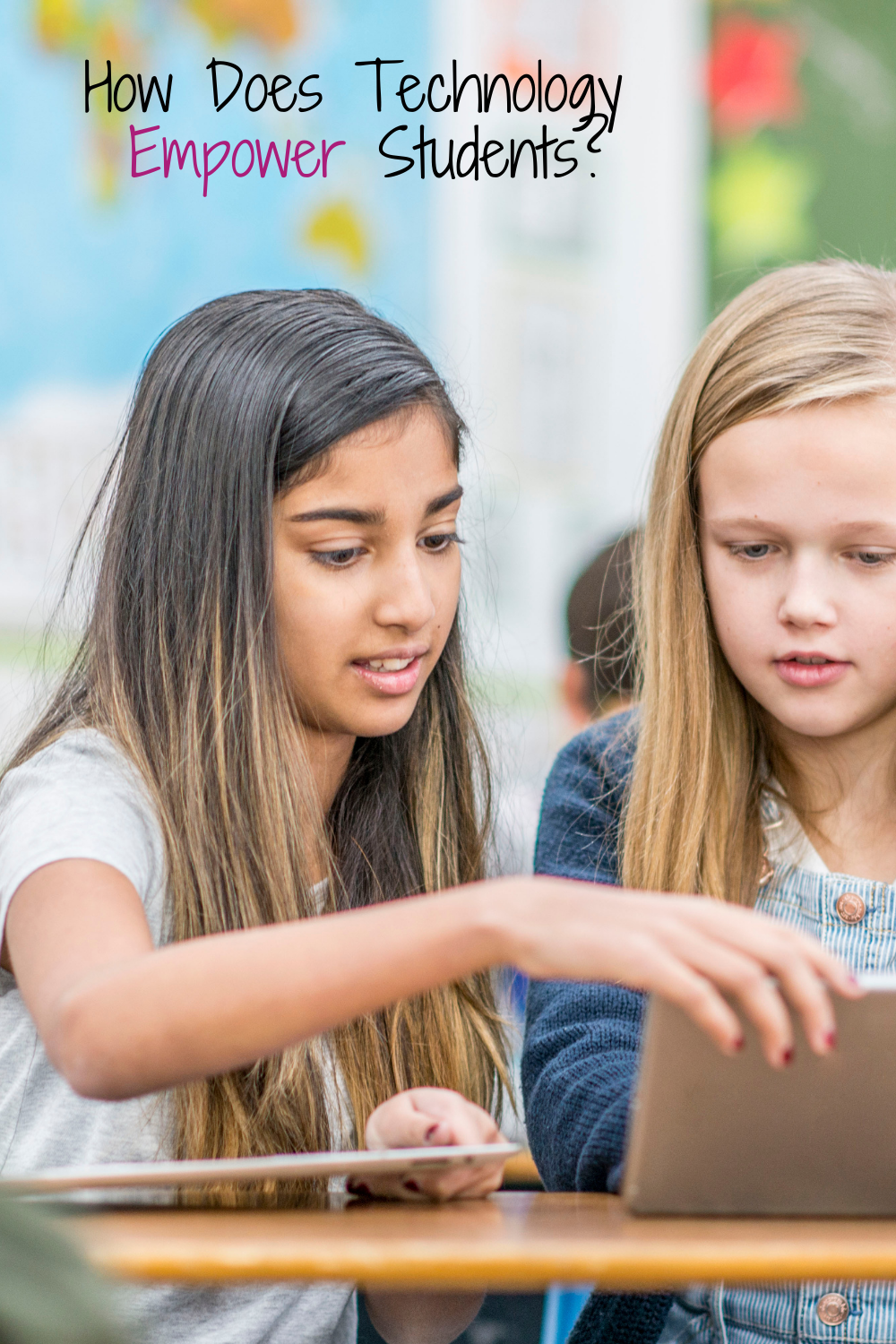How Does Technology Empower Students to Be Life-Long Learners?
Inside: How technology has empowered students to use collaboration skills and customized learning environments to become lifelong learners. Three reasons to embrace technology use in your classroom.
“Can I help you find something?
The librarian must have noticed the panicked look on my face as I scanned the library shelves looking for the book I needed.
I was pretty sure I was correct- all three of the “c” volumes of the encyclopedia were checked out.
I breathed a sigh of relief when the librarian reached behind her desk and produced a copy returned that morning!
Now I could find the information I needed to finish my report on cell division.
Does this seem familiar to you?
If it does, you were in school before the internet made its way into the classroom.
When I wanted to learn more about cells, my options were limited for a report I was assigned in class. I could get information in a few ways:
My science textbook
The oversized hardcover set of dusty encyclopedias
Books on cells the librarian thoughtfully had ordered
Listening to the lecture my teacher gave during class
Options were limited.
If I was lucky and had listened during class, got the encyclopedia I needed, and remembered my science textbook, the report would be pretty easy to write. But what if I wanted to know more?
What if
I loved all things microscopic?
I wanted to become a biologist?
I had to prove I was right when my brother and I argued over a random fact about cells?
Again- options were limited.
Before technology, students were limited to learning what the teacher shared in class and what they could gather from the books available to them in the school library.
If students wanted to work together on a project or learn from each other, they were often limited to the time available in class or the willingness of a sibling to drive them to a classmate’s house.
What is Empowerment?
Empowerment is a big word with a simple meaning.
Empowerment is the concept of an individual having the power or authority to do something independently.
Technology has empowered students to have more authority over their education.
While students were able to go to the library, ask questions, and talk to teachers, they were otherwise limited in how much they could choose to learn and how they could gather information.
With the evolution of technology and its role in student life, students are now empowered to direct their own learning.
Technology and Today’s Student
We all live in a world where technology is available everywhere we go.
Computers
Cell phones
Tablets
Chromebooks
Ordering systems at restaurants
Grocery store checkouts
Many of us grew up without technology being as prevalent as now. While we have had to learn technology through a course or training, our students have grown up with technology embedded in their lives.
How Does Technology Empower Students?
Technology is a powerful teaching and learning tool. Our students have access to the internet and information that before would have only been available through a teacher's instruction or perhaps a set of encyclopedias or textbooks.
Now we have instant access to information with a few keystrokes. They can use word processing tools, portable devices, and internet-based communication to learn in previously impossible ways.
Need ideas on how to encourage the use of technology to help students take ownership of learning? Check out this post on 5 Ways to Empower Students to Take Ownership of Learning in a Digital World.
Technology as an Empowerment Tool
Students have access to information. They no longer need to wait till they can go to the library to check out a book or look through a set of encyclopedias or wait for the teacher's lesson on it.
Students can interact with tools like Google Docs, collaborative Microsoft documents, Zoom meetings, and chat.
Students can customize their learning experience through accessibility features to make learning easier.
Easy Access to Information
Let’s pretend a teacher is providing a lesson on genetics.
In the past, a student would be able to learn what the teacher was telling them, and maybe read a little more in their textbook.
Today the same student can take control of their learning.
They can use the internet to research information on genetics from professors worldwide.
They can watch videos on genetics and genes.
They can take online courses.
They can read blog posts and even scientific journals about genetics.
Students passionate about a topic can decide how much they want to learn.
Collaboration with Technology
Students who learn best by collaborating and having conversations, and discussing ideas can use technology to connect with other people in their schools or worldwide.
Virtual field trips
Meet with professionals from the field
Collaborate on documents or presentations
Share feedback on assignments
Collaborate at any time of day
Learning and working together are no longer limited to class time. This empowers students to share ideas. And perhaps even more importantly, it allows students to ask questions, give feedback to each other, and learn how to interact professionally.
Technology for Accessibility and Customized Learning Environments
One of the most important features of technology and its ability to empower students is the accessibility features of the devices students are using.
If a student learns better auditorily, it is straightforward for a student to have a book or a paper read aloud.
If a student writes better by talking and getting their ideas down, and can talk faster than they can type, they can use speech to text.
For students with disabilities who may not be able to read the screen due to a visual impairment, screen readers can read the content out loud.
Students who may have struggled in the traditional learning environment can now use technology to access the materials available to every student in the classroom.
The devices our students use every day have built-in accessibility features that allow things such as:
Increased brightness
Magnification
Color coding
Voice typing
Switch access
So so so much more
Each of these things allows our students to customize their learning environment to a format that fits their needs.
Technology and The Empowered Learner
Technology has opened the doors for students to become lifelong and self-directed learners.
Like Choose Your Own Adventure books, technology today allows our students to choose the way they're going to learn and how they're going to interact with information.
And unlike encyclopedias there is no need to desperately scan the shelves hoping the volume you need is there.














